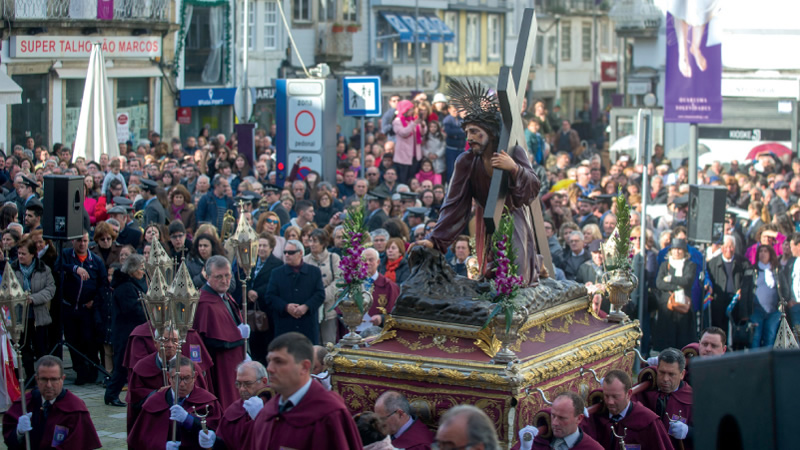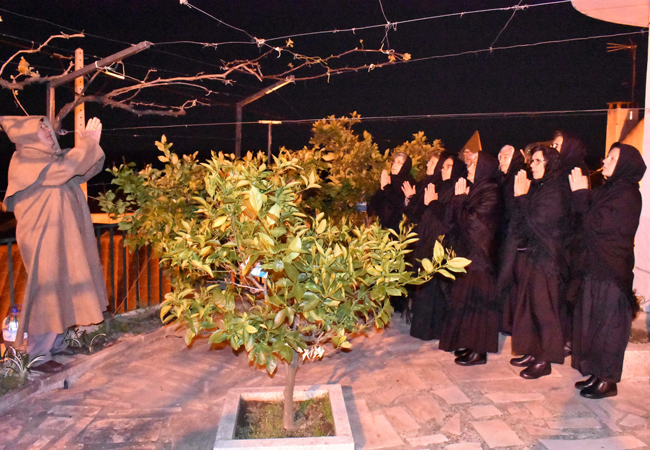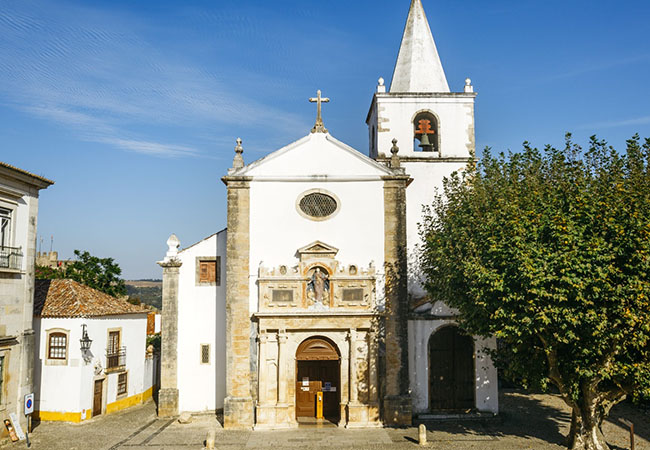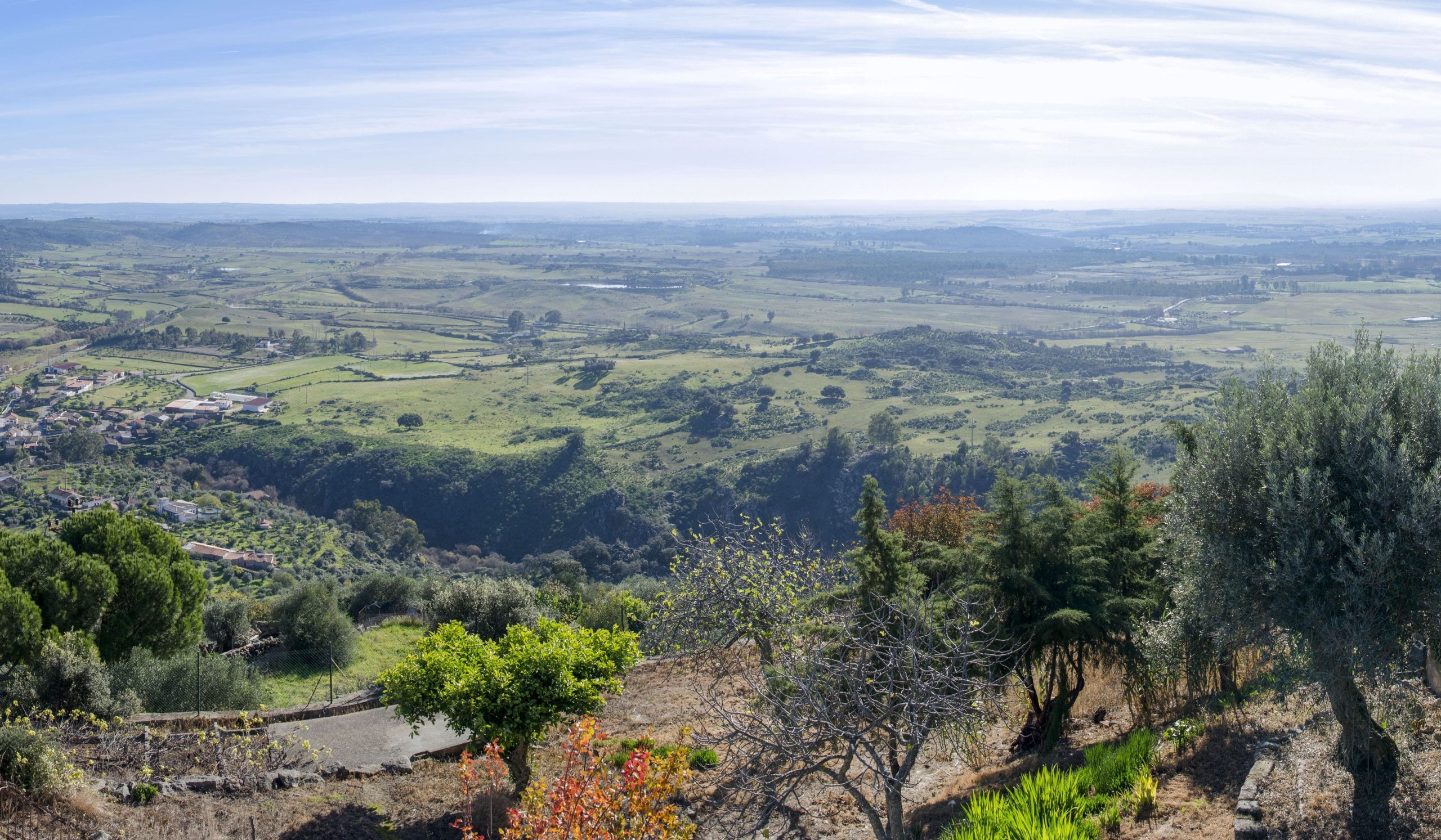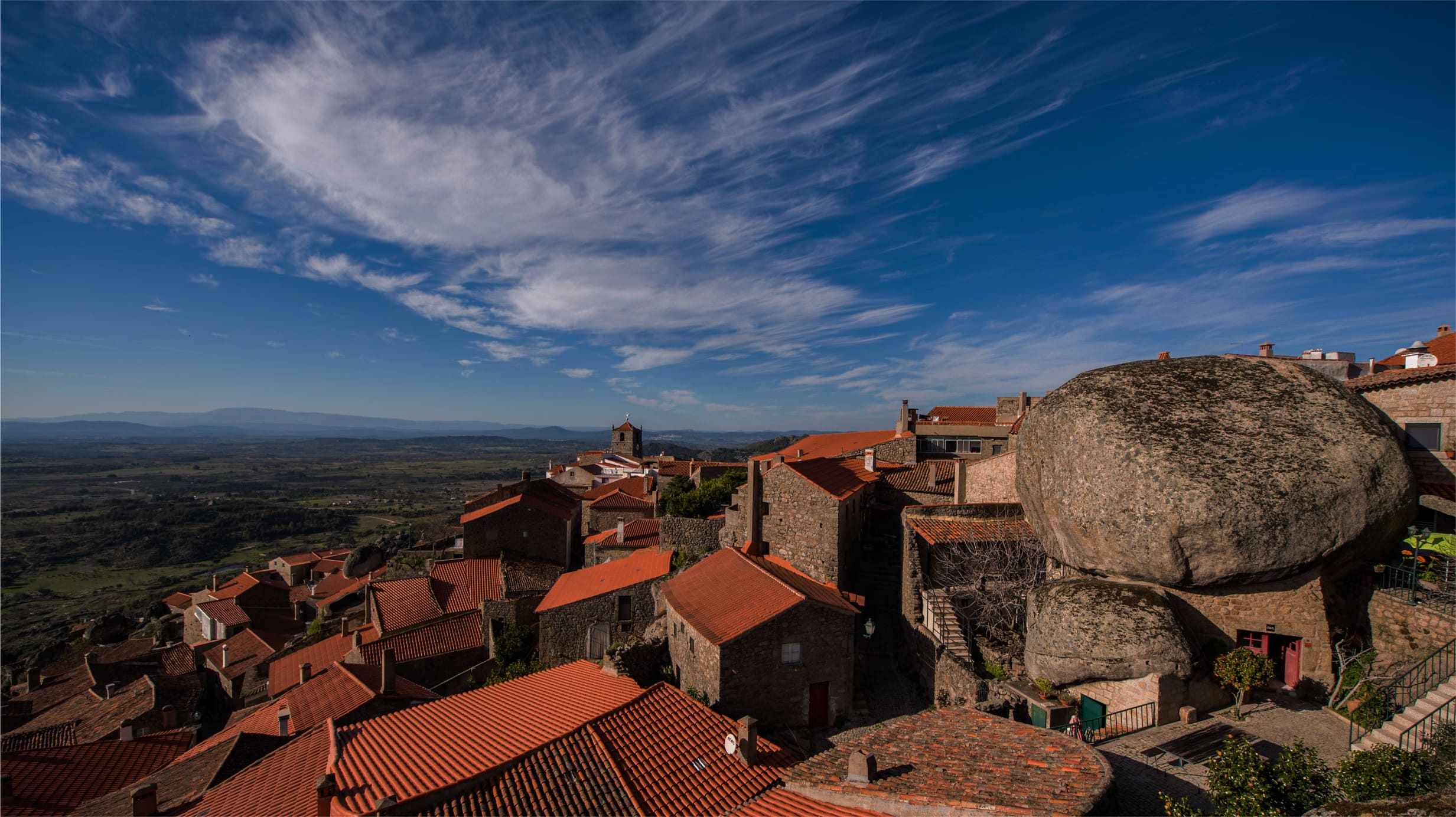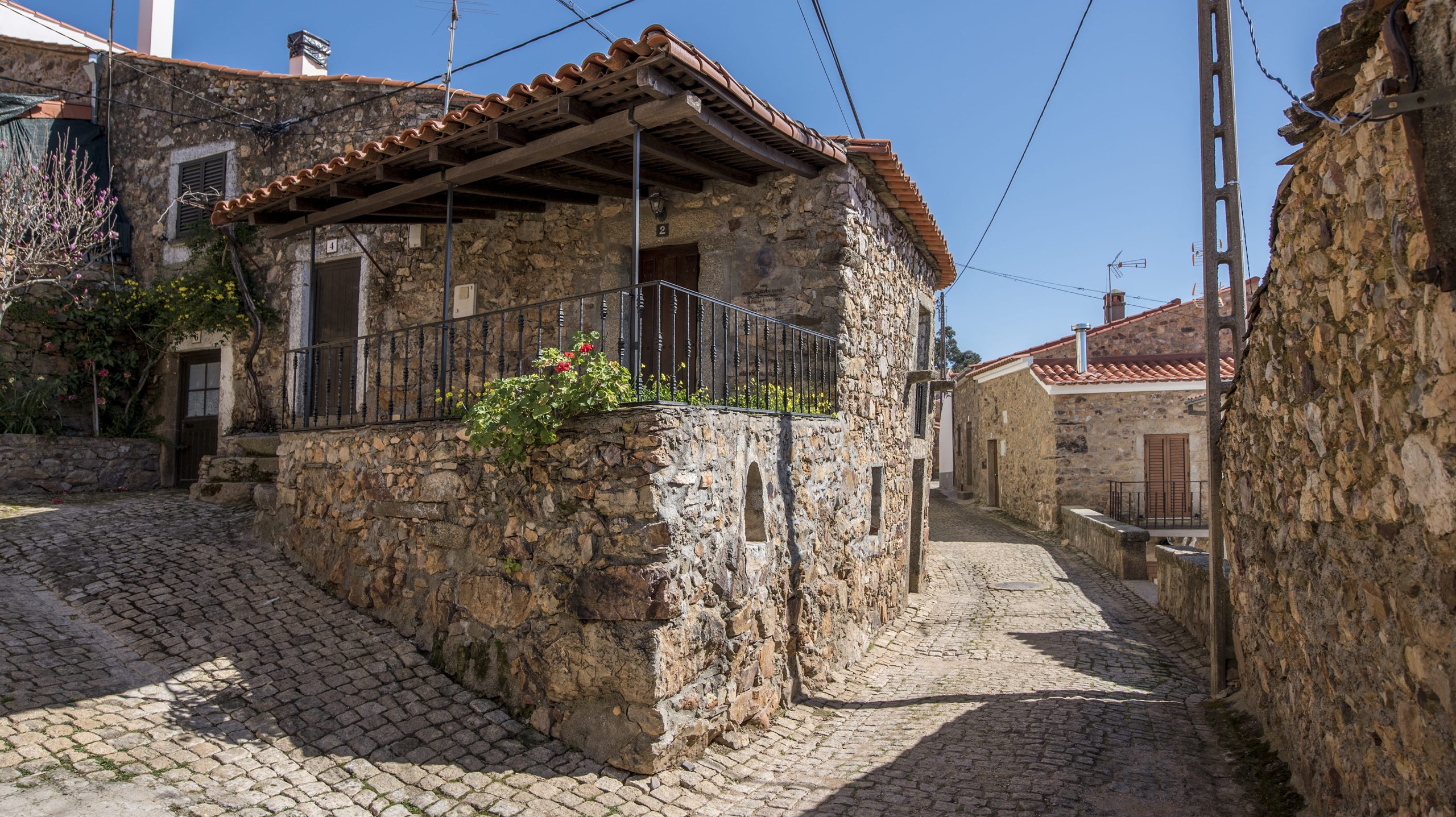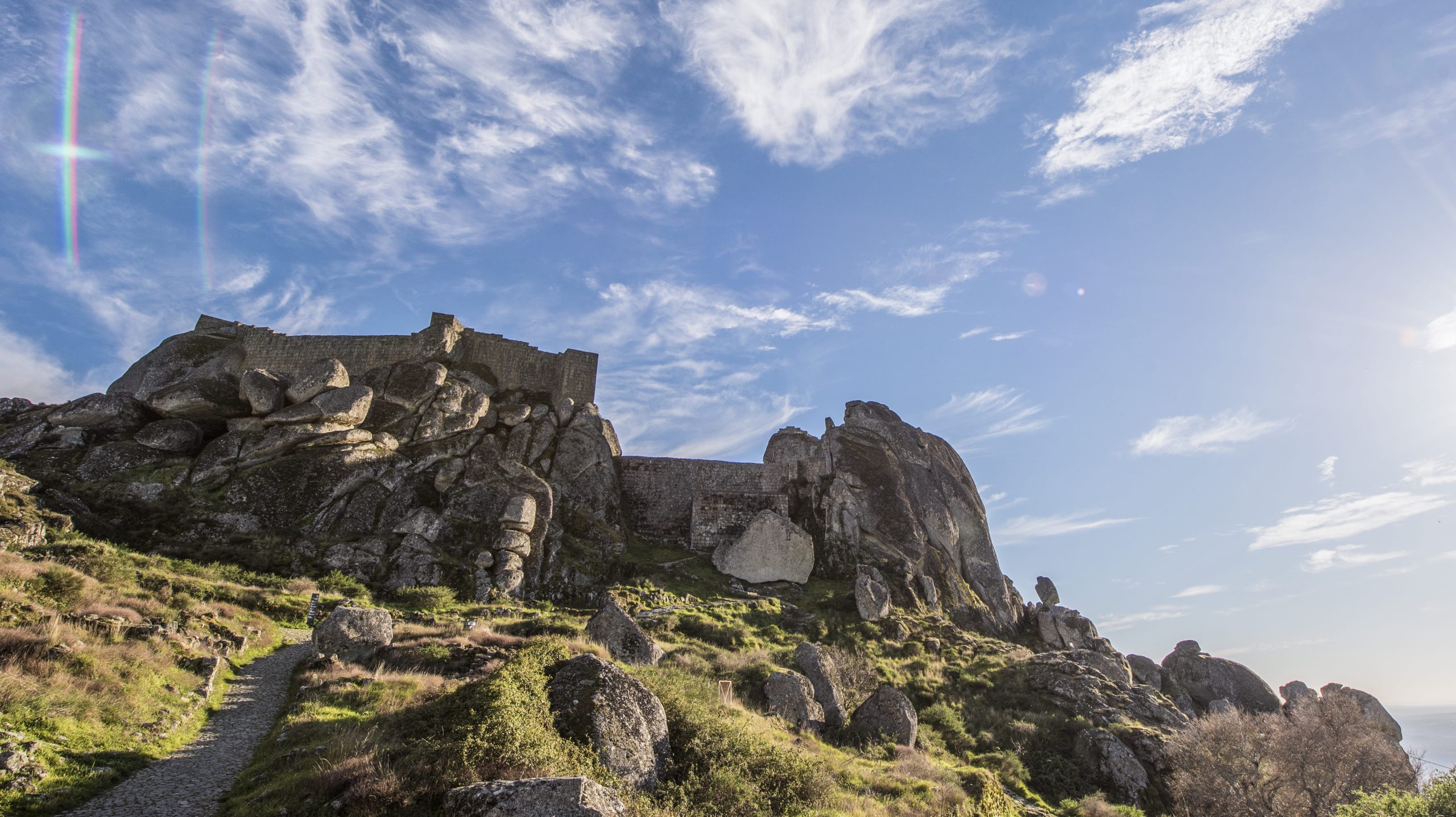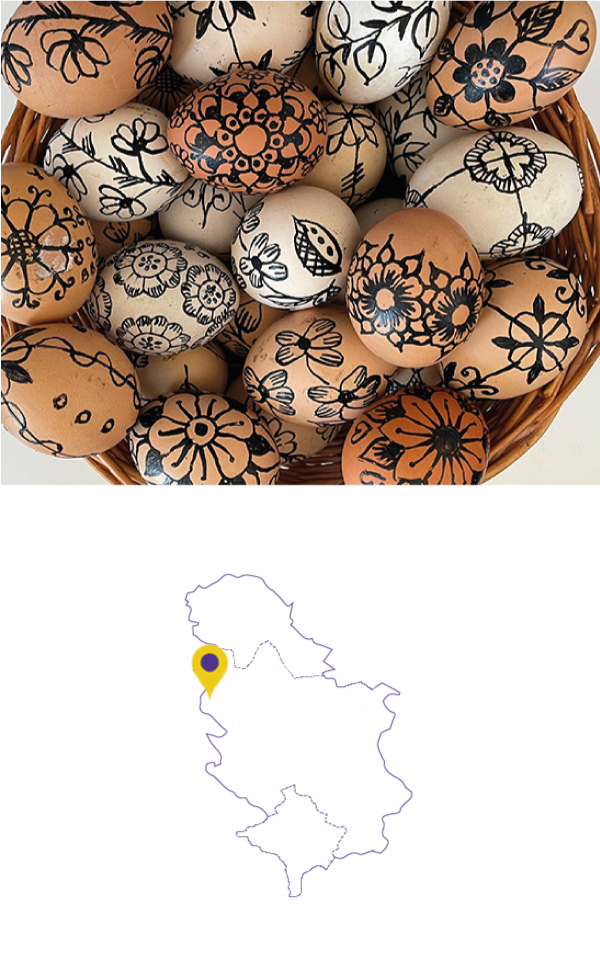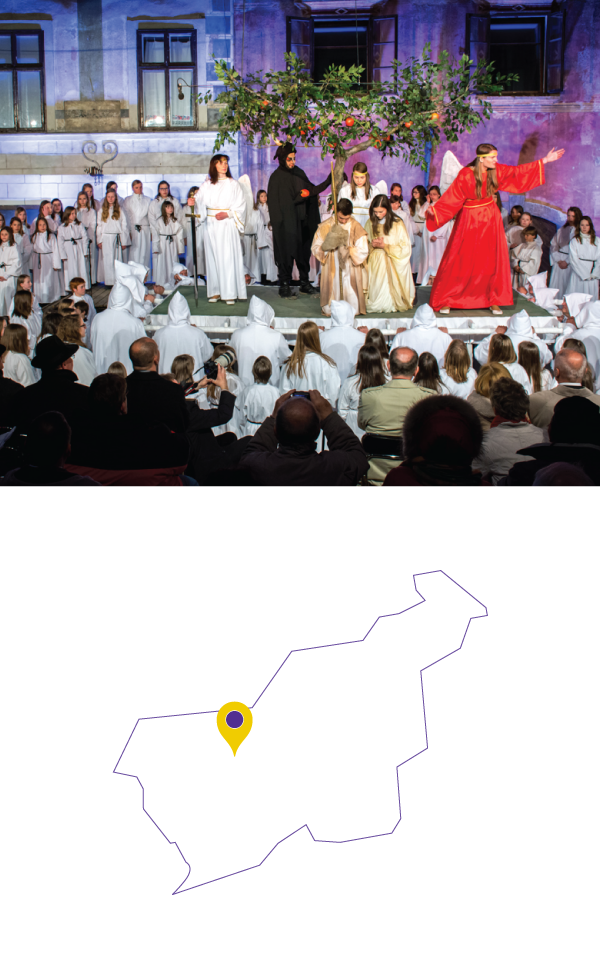Idanha-a-Nova is located in the interior of Portugal, in the Center region of the Country (Beira Baixa), and in the sub-region of South Inner Center Side (Beira Interior Sul), it is approximately 40 km from the border with Spain and about 34 km from the city of Castelo Branco, capital of the district. Idanha-a-Nova is the fourth largest municipality in Portugal with an area of 1,416.34 km² and 8,500 inhabitants, divided into 13 parishes. In the uncertainty of its historical origin, it is thought that the construction of the Castle took place in 1187, by Gualdim Paes, master of the Order of the Temple, being a landmark in the Village.
Idanha-a-Nova
Viajar en la red
IDANHA-A-NOVA
BACKGROUND
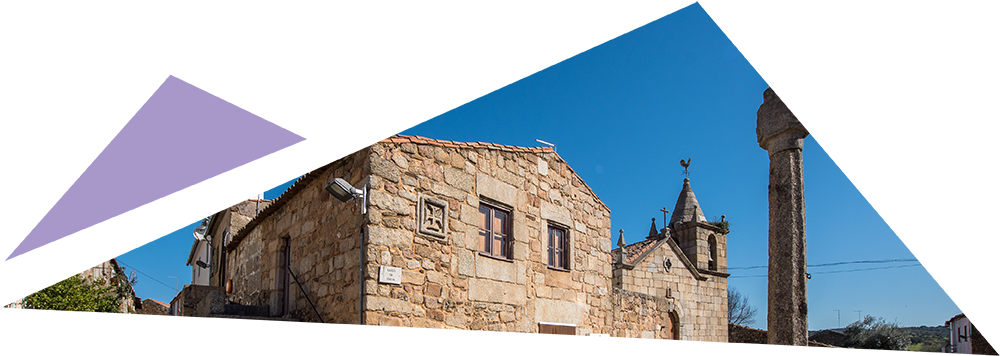
In 1206, D. Sancho I, attributed the title of village to Idanha-a-Nova, to distinguish it from the old Idanha-a-Velha (Egitania). The built heritage has been preserved, such as the Mother Church of medieval origin, the Mercy Chapel, the Bell Tower, the Manzarra’s house, heir to the Convent of Santo António, the former Franciscan Convent of the 17th century, as well as the Chapel of Nossa Senhora das Dores, a small Baroque Temple always linked to Catholic worship.
WHAT TO SEE
Idanha-a-Nova, history and culture, rich in natural heritage, with spaces that are part of the National Museological Network. Creative City of Music by UNESCO, has the musical instrument Adufe as its greatest symbol.
Idanha-a-Velha, which was the origin of Idanha-a-Nova, has been historically classified as a National Monument, and it is unavoidable in the context of the country’s main archaeological sites. Its baptistery is considered the oldest in the Iberian Peninsula.
Monsanto, a population belonging to the municipality of Idanha-a-Nova, is declared a Historical Village of Portugal, with houses built over stones to take advantage of the granite barrows and where the hills are part of the UNESCO Naturtejo Geopark. Here, the Iconological Park of Penha Garcia preserves countless traces of what life was like more than 480 million years ago, when these quartzite ridges were an immense sea where trilobites reigned, in an impressive world of aquatic biodiversity.
The biodiversity of the International Tagus Natural Park, part of the Portuguese Network of Biosphere Reserves of UNESCO, constitutes a sanctuary where eagles or vultures can be observed.
Monfortinho Spa, is a spa town in Idanha-a-Nova, with medical water springs. It is a true natural paradise, where water and the environment work wonders for the excellence in human health.
Sanctuary of Nossa Senhora do Almortão This sanctuary has harmonious architecture and bears testament to the town’s deep devotion to Our Lady of Almortão. It was built in the seventeenth century on the site of an older church. The main chapel and gold altar are adorned with eighteenth-century tiles. The walls of the altar and nave feature several ex-votos, the oldest dating back to 1767. An eighteenth-century dressed sculpture of Holy Mary, holding the Infant Jesus, overlooks the church from the altar’s camarín. The chapel is the epicentre of the exuberant pilgrimage celebrated during the continuation of Paschal joy, 15 days after the Solemnity of Easter.
HOLY WEEK AND EASTER

In the Municipality of Idanha-a-Nova marked by rurality, Lenten and Easter traditions still exist that have long since disappeared in most of the interior regions of the country. Contributing to its permanence, the nine existing Mercies in the Council, the commitment of the guardians in the Parishes and also the action of the parish priests.
During Lent, Holy Week and Easter, there are notable manifestations and expressions of popular piety, which, in addition to the traditional and secular Processions Running and Steps, the Meeting, the Burial of the Lord and the Resurrection, take place in the open air and rituals in the sacred space such as the Sing to the Souls, the Martyrdoms, the Chaplet of Men, the Litany, the Sacred Passion, the Most Praiseworthy, the Lady of Sorrows, the Reveals, and even the scenic representations of Going to See Our Lord, the Supper of the Twelve, the Descent from the Cross, Mary Magdalene in the Sermon on the Crucified Lord, Veronica, the Three Marys and the Holy Steps.
At the end of these ceremonies, on Hallelujah Saturday, the expansive commemoration of the Resurrection of Christ takes place, to the sound of the ringing of bells, the sound of the millenary Adufe and the procession through the streets, followed by the picking of almonds at the parish priest’s door.
The joy of the Mother of the Resurrected One continues with the festivities of Marian devotion with pilgrimages in rural sanctuaries, the most famous and genuine Pilgrimage of Our Senhora do Almortão.
Lent
Every Friday during Lent in the Santa Casa da Misericórdia church in Idanha-a-Nova, a scene from the Passion and Death of Christ is re-enacted in the tribune. This tradition was – and still is – important on a catechetical and pedagogical level in a city that had one of the highest illiteracy rates among women in Portugal in the early twentieth century. During Lent, it is tradition to visit Our Lord in La Misericordia church, where re-enactments are performed and the stone and dressed sculptures are prepared, including Senhor dos Passos (Our Lord of the Stations of the Cross), the Virgin Mary, Saint John the Evangelist, Saint Mary Magdalene, Ecce Homo and the Resurrection of Jesus Christ on the Cross.








